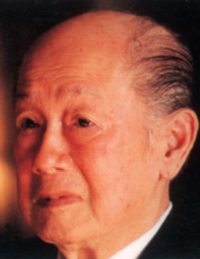Today in the papers the evidence of the enemy’s bad aim the day before. It was very bad, indeed.
“Now, nobody is safe.”
Among the objects the enemy did not aim at was the Santo Domingo church. Built in the 16th century, it has been destroyed several times by typhoons and earthquakes, as many times rebuilt. It took the Japanese to destroy it by mistake.
Heavy with history, the structure enclosed the venerated Lady of the Rosary. The bejewelled image, valued at a cool million, had been placed in a steel vault. It was saved.
Less fortunate were the Dominican “convento” and the Santa Rosa College, both destroyed. The Intendencia building, which housed the Philippine mint, was directly hit several times. The Santa Catalina College, the old building of the University of Santo Tomas and the Intramuros Primary School were partly destroyed.
Nor were these all.
For many days to come, the city will look back on that day and each one will recall, in his own way, how close he had been to the bombing, how, but for some business or other, he might have been that day in Intramuros.
Today they bombed Manila again. Again the ships still in the Pasig River drew the Japanese fire. From 11:45 a.m. till 1:10 p.m., Japanese bombers, free from any threat of anti-aircraft fire, swooped down the river raining bombs. They hit the Letran College, the Intendencia building again, Engineer Island, the NARIC bodega near the mouth of the river, the San Fernando Fire Station in Binondo, and, their aim improved from practice, some of the ships in the river.
I was at the house of a friend, near enough the bombing to hear, for the first time, the sound that a bomb makes as it comes through the air. If the bomb is near, it makes a sound like that of a car going very fast down the street, with the barest hint of rustling leaves. It was all very poetic and sinister.
During the bombing, one said:
“This is the first time I have lain flat on the floor during a raid. I don’t like it. In this position, I can’t feel brave and unruffled. I feel I am letting myself down.”
The USAFFE declared, for the third day, that fighting was desultory in the north, but very heavy in the south. The Japanese, it was admitted, were reinforcing their northern troops as well as those at Atimonan. Enemy activity in the air was heavy.
Another communique explained why Manila was declared open. It was a much better explanation than the first. The guns being used to defend Manila were needed elsewhere, where they could be of greater use.
“The declaration of Manila as an open city was intended not only to preserve the city from the ravages of war, but also intended to increase the possibilities of the defenses in the outlying areas.”
The city was satisfied. It was a military necessity. And would serve, besides, since the enemy has shown no sign of respecting the declaration, to condemn him beyond argument. It serves our purpose and the enemy cannot plead extenuation.
Tonight, so that the character of Manila as an open city may be placed beyond cavil, so that even the near-sighted may see, the authorities lifted the blackout order. The city is now open day and night. The people may keep their lights shining.
Few –we have grown accustomed to the dark– did.
I had just gone out of the house for a breath of fresh air. I saw two or three lighted windows. The rest along the street were dark. Intramuros, however, burning on my left, made up for them.
The city is lighted up, all right.
